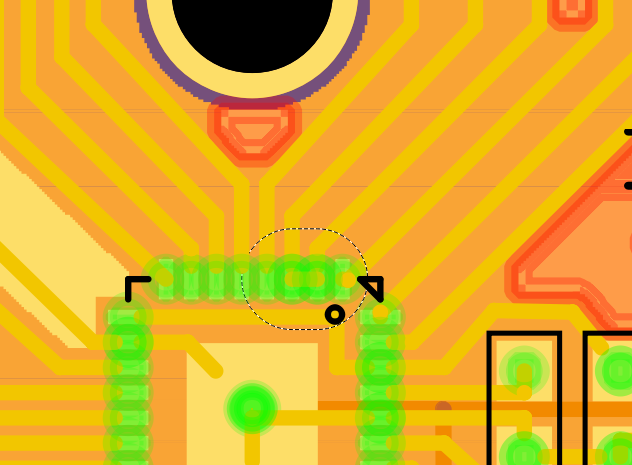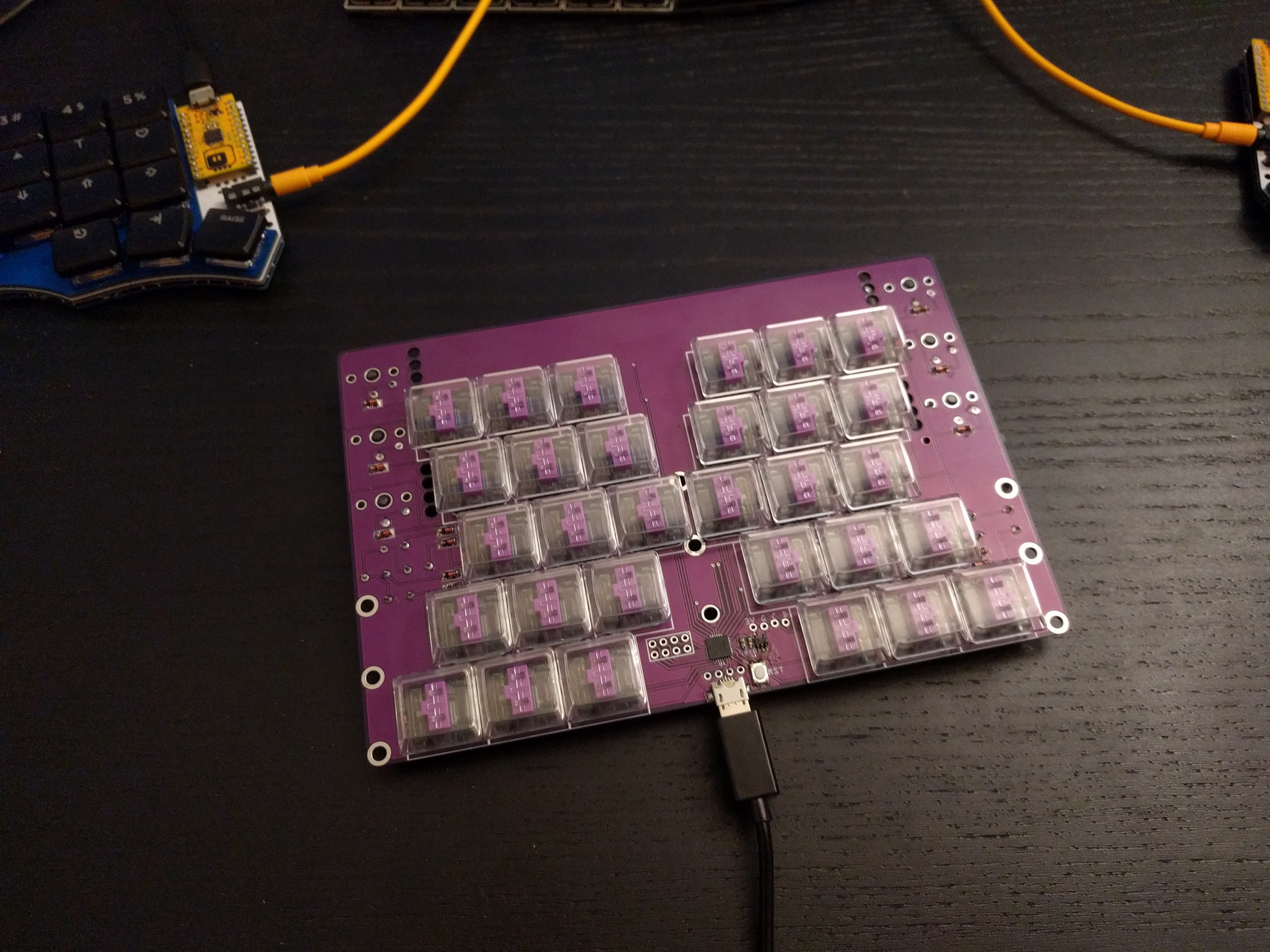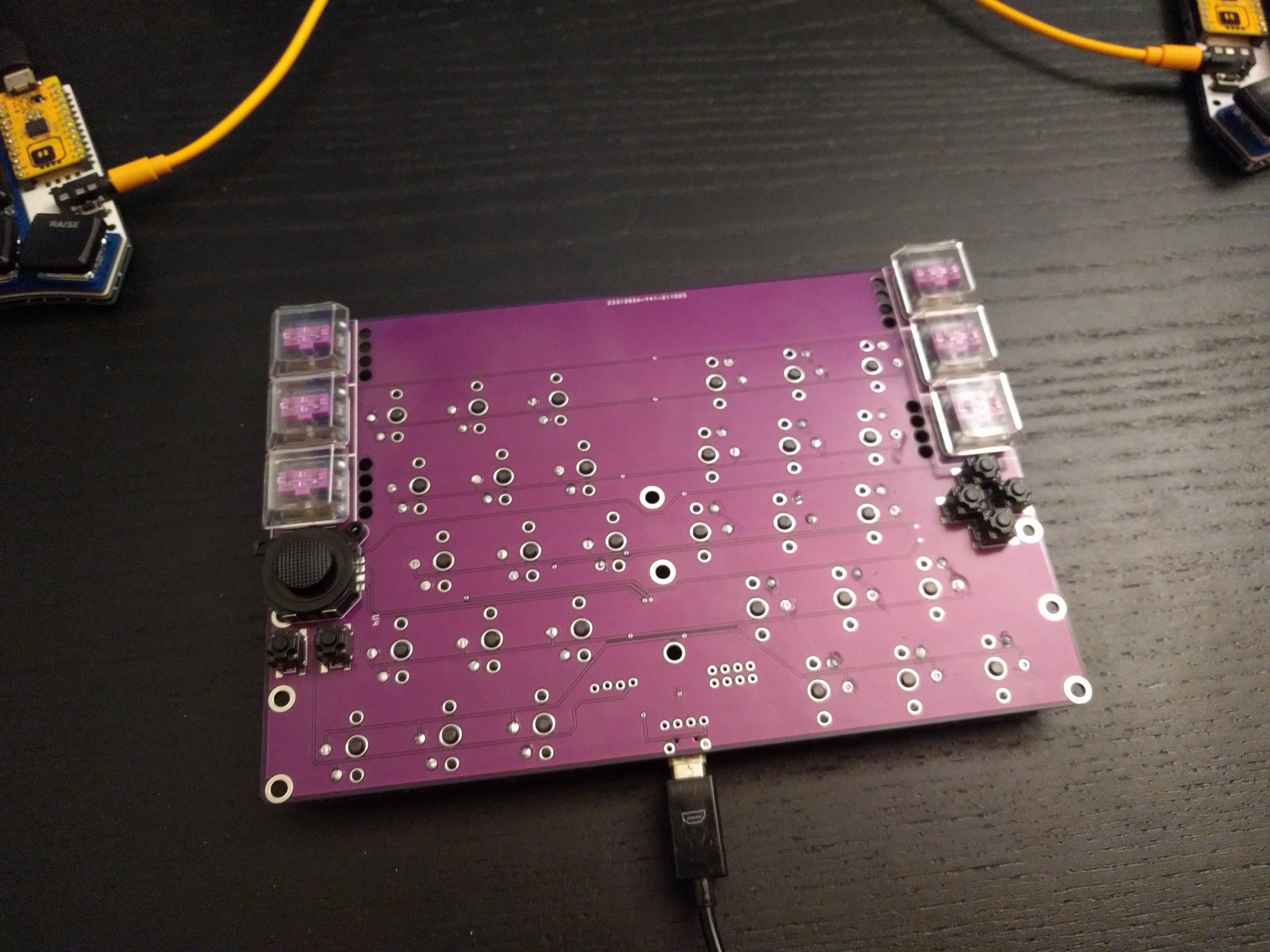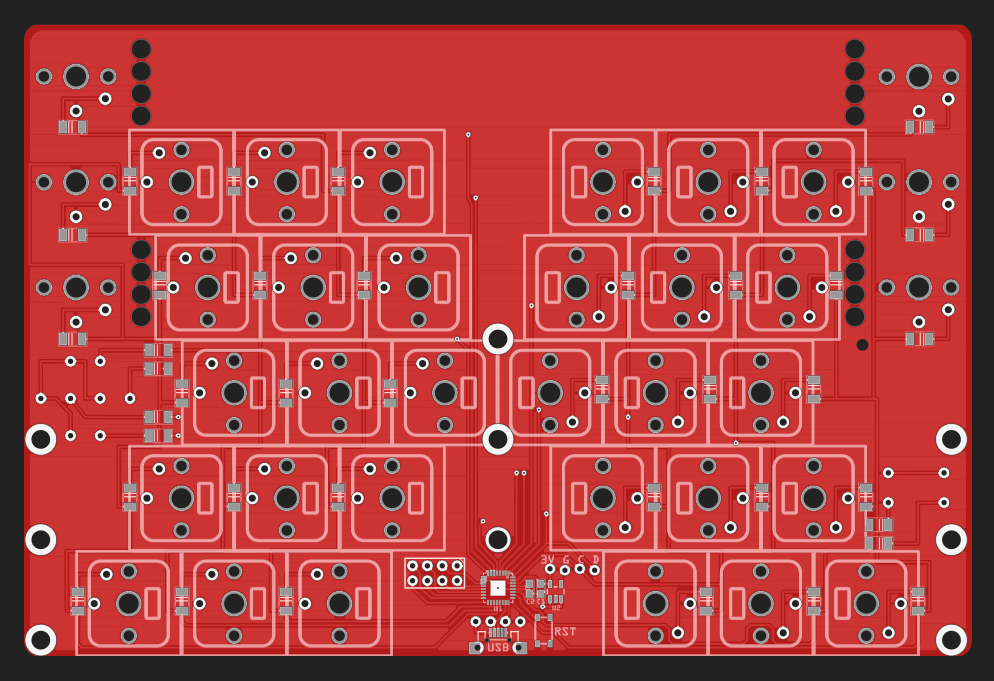-
Results
06/20/2024 at 12:10 • 0 commentsI just realized that I never updated this project with the results of my experiment.
In short, I'm disappointed.
I was hoping the muscle memory and learning from a traditional split keyboard would transfer to this layout, but it turns out that our muscle memory seems to operate in terms of absolute positions, not relative movements, and that rotating the keyboard by 90° and flipping it completely defeats any learning you might have benefited from from use of a regular keyboard.
The keyboard is possible to use, but you basically have to learn to type on it from scratch.
-
Bodge, Bodge, Bodge
11/06/2021 at 20:48 • 0 commentsFinally the weekend is here, and I had some time to actually program and test this device. Right away I found this tiny little problem on the PCB:

It's hard to see, but there is a trace between PA01 and PA02 pins. One is part of the key matrix, the other goes to the analog joystick, so this would give us some really interesting effects — fortunately I noticed it, so I could desolder the chip with hot air, cut that trace, and solder it back again.
Next, I had some fun getting the D-pad and the mouse buttons to work. For some reason they were ignored. After about an hour of experimenting, replacing switches, replacing diodes, cutting traces, adding bodges and so on, I finally figured out what is happening. I made two footprints for buttons in there, both SMD and THT, so that I can experiment with different buttons. But I didn't notice, that the THT buttons I used this time, have some of the contacts sticking out on the sides. Those were making contact with the SMD pads, resulting in the switch always being on. Since the keypad module is event-based, and the switch was on even before the code started, so we never got a keypress event, and obviously it also never was released to generated a key release event, so the key was basically being ignored. To make it more interesting, those contacts are only one one side, so the problem was only present for about half of the buttons — depending how they were rotated. In the end, I just rotated the misbehaving buttons 180° to fix this.
-
Version One
11/02/2021 at 18:46 • 0 comments -
PCB Design
10/24/2021 at 00:03 • 0 commentsI'm going to start with just a very simple mechanical design, just a PCB with the switches on both sides. I can think about improvements if the basic idea proves workable. So after compiling the very latest version of Fritzing (the appimage they released doesn't work on my system), I went to work and created this:


Yes, the traces have right angle bends. I don't care. This is a prototype. I can clean it up some other time.
I also added a joystick and a d-pad on the front side, for those moments when you are not typing. The USB socket is on the bottom, because that's where many devices have their socket as well — you can use a short OTG cable to connect them.
 deʃhipu
deʃhipu



